Private: Part II: Global Histories
Chapter 3: Queer New World
Challenging Heteronormativity in Archaeology
James Aimers
Introduction
The word archaeology is derived from the Greek words arkhaios, which means “ancient,” and logos, or “study.” Archaeology is generally defined as the study of the human past using material evidence (i.e., physical things as diverse as pottery or pollen). In North America, archaeology is typically a subdiscipline of anthropology, along with cultural anthropology, linguistics, and bioanthropology. Archaeologists focus on the prehistoric, or preliterate, past, whereas historians study the literate past. These fields overlap, however, because historical records are sometimes used in archeology. The origins of archaeology are themselves archaeological because we know that ancient people across the world collected artifacts from periods that preceded them. For example, the Aztecs of Mexico collected objects from the earlier site of Teotihuacan, and officials in the Chinese Song Empire excavated, cataloged, and studied ancient artifacts from their own culture.
The current discipline of archaeology developed out of antiquarianism, an interest in ancient Rome, which has roots among Europeans as early as the fifteenth century but is most closely associated with the collection of ancient objects in the nineteenth century. These include objects related to sex and sexuality, many of which were placed in collections of erotica like the Secretum at the British Museum and, for objects from Pompeii and Herculaneum, in the Gabinetto Segreto of the Naples Archaeological Museum. Until relatively recently these sorts of collections were typically privately owned or restricted from public view, showing the discomfort that scholars and the public have had in addressing issues of gender and sexuality in open and systematic ways.
The use of physical evidence to reconstruct the past is challenging because things can have multiple meanings to different people or mean different things in different contexts. In 1917, the artist Marcel Duchamp placed an ordinary, mass-produced urinal in an art exhibit, and that new context changed its meaning from a functional, everyday object to a work of art (figure 3.1). Similarly, cows are ordinary animals in North America and Europe, but in India they are sacred. Thus, to understand artifacts, archaeologists must interpret them according to the cultural contexts the artifacts came from. This can be difficult because the context may be unknown (as in the case of looted artifacts), inadequately excavated (e.g., constraints of time or funding), or drastically changed by time (e.g., weather, erosion). Even when we have texts that relate to the artifacts, those texts may not address the issues with which we’re concerned. For example, ancient Maya hieroglyphic writing describes politics and ritual but not sex and sexuality. We also cannot ask the people who made or used archaeological objects what they meant. Although we can ask their descendants, their cultures may have changed enough that the original meanings are lost. The use of objects to understand complex and culturally varied concepts like gender and sexuality is especially challenging.
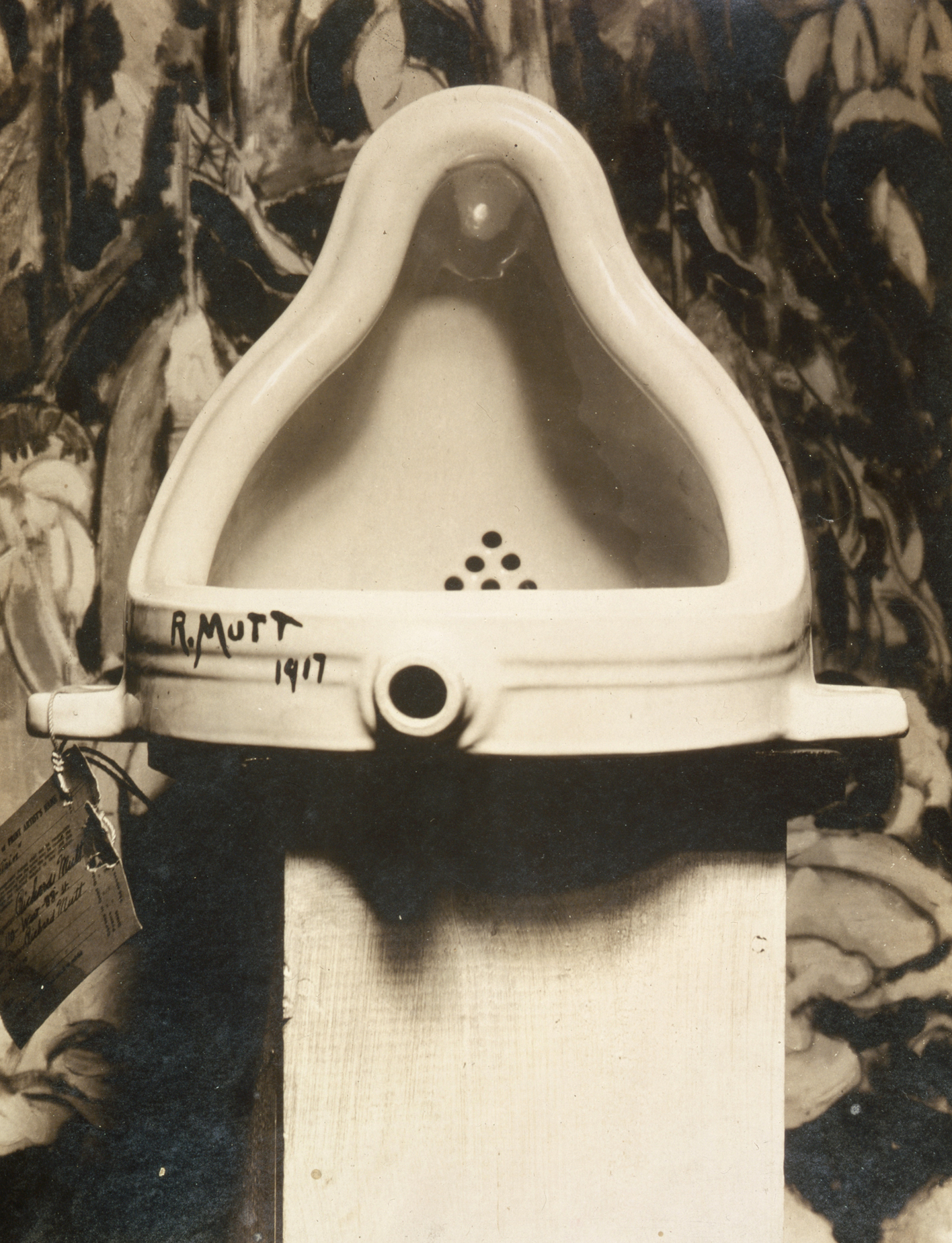
In this chapter, I identify some LGBTQ+ themes in the archaeology of Mesoamerica and the Andes. I show that many of these new interests and observations have been inspired by feminist and queer theory. Although some aspects of queer theory have become almost mainstream in archaeology, the topics of sex, gender, and sexuality remain challenging ones for archaeologists.
Queer Theory and Archaeology
Queer theory is often considered an aspect of critical theory with roots in feminism. It is counterhegemonic and challenges archaeological normativity of all sorts—most notably heteronormativity.[1] But critiques of queer theory are not limited to sexuality, and some people argue that queer theory is not a theory (or set of theories) that explains the world but rather a way of looking critically at normative assumptions about the world.[2]
Archaeological engagement with queer theory came mainly through the influence of feminism.[3] The growing influence of feminism in the twentieth century led to critiques of existing norms around gender, sex, and sexuality in many fields, and by the late 1970s these critiques began to inform archaeological studies. Nevertheless, many archaeological studies implicitly assumed that the norms and institutions that we take for granted today were present and important in the distant past. Thus, archaeologists often assumed that the Western sex and gender binary oppositions (male versus female and man versus woman) were normative across all cultures or that institutions such as the nuclear family and monogamy also applied to ancient cultures.[4]
During the 1980s and 1990s feminist ideas became mainstream in archaeology, as shown in the many works about and by women in those decades. An important development was the entry of queer theory into the archaeological mainstream in the first years of the 2000s with two seminal collections: a thematic issue of World Archaeology and the proceedings from a 2004 conference titled Que(e)rying Archaeology.[5] Since then, archaeologists have increasingly investigated assumptions about sex, gender, and sexuality, and queer theory has been used to challenge normative assumptions of all sorts.
Although potentially any topic can be examined through a queer theory lens, the most influential uses of queer theory in archaeology have been in relation to gender, sex, and sexuality. This is in part because queer theory challenges essentialist and sociobiological ideas about these issues in popular discourse and in some scholarship. If we think of queer as being fundamentally disruptive, then a lot of early work that challenged fundamental assumptions could be called queer, even if those works were not labeled as such by their authors.[6] These studies express a queer emphasis on the “instability of the subject” and the “fluidity of identity,” as well as the inclusivity characteristic of queer theory.[7]
Queer theory has questioned universals, essentialisms, and especially, the categorizations we use in archaeology.[8] In archaeology, binary oppositions related to sex, gender, and sexuality like man versus woman and homosexual versus heterosexual have been the most heavily critiqued. A “truly queer archaeology” will question “received categories of present-day sexual politics and seek to develop archaeological methodologies that do not depend on these problematic sexual taxonomies.”[9] My work with the classification of ancient Maya pottery reminds me that all classifications are created to answer particular questions and that not every question can be addressed with a single classification. So the idea that there is one, transhistorical, all-purpose classification of bodies or gender or sexuality is no more reasonable than the belief that one really great way of classifying pottery could answer all our questions.
The Constructedness of Sex
One classification that most people probably consider unchallengeable is that of the two sexes, male and female. But about 2 percent of humans are born intersexed, and Anne Fausto-Sterling and others have drawn attention to the range of variability in the sexual characteristics of human bodies.[10] Biological sex is multifaceted, potentially designated in reference to chromosomes or DNA, hormones, breasts, genitals, reproductive abilities, or in archaeology, skeletal characteristics. As Fausto-Sterling notes, “Labeling someone a man or a woman is a social decision.”[11]
These complexities have been acknowledged by bioarchaeologists, who study human remains. In a discussion of ancient Maya human remains, Pamela Geller remarks that “femaleness and maleness reside at opposite ends of a continuum with ambiguity situated in the middle. Thus, it would appear that a strict binary opposition of female and male is supplanted by a continuum of sexual difference.”[12] Indeed, Rebecca Storey may have identified an intersex person in a royal Maya tomb at Copán, Honduras.[13]
Some suggest approaching sex in a similar way to race, as a social construct: “The ways in which race is described as a social construct may be translatable to sex: what we understand to be a biological sex is composed of a diverse set of variables that may not invariably pattern out into what we socially comprehend as male and female.”[14] In a 2016 issue of the Journal of Archaeological Method and Theory dedicated to challenging “binary binds,” the editors heralded recent attempts “to resist predetermining the types of persons we expect to see” in the archaeological record.[15] “Many scholars now approach sex and gender as a continuum . . . , emergent in practice. . . , and potentially variable throughout the life course.”[16] Some archaeologists now prefer to see identity in general as fluid and changeable—that is, a phenomenon that is processual and not a taxonomy, or “a set of taxonomic specificities.”[17]
Furthermore, we cannot assume that physical sex differences were as important to people in the past as they are to us and that they were given as much weight in identifying people. Even contemporary ideas about sex turn out to be, from the perspective of archaeology, relatively new. In his book Making Sex, Thomas Laqueur shows that perceptions of the sexed body changed radically from antiquity until the twentieth century.[18] Up until the eighteenth century,
anatomical and physiological representations of male and female bodies in Western and Eastern medicine relied on a common, androgynous body with differently positioned but homologous reproductive organs in each sex, the vagina being an inverted and internalized penis and so forth. Physiological differences were explained by relative humoral balances, heat, or measures of yin or yang.[19]
Even when the physical differences between the sexes were recognized, they were not important until the end of the 1700s, when they became useful in arguments for or against the role of women in education and public life.[20] It bears repeating that classifications are not neutral—they are created in specific cultural contexts in relation to specific questions.
Queering Sex and Gender Binaries
The distinction between sex as biologically determined and gender as socially learned was popularized by John Money and Anke Ehrhardt and is now a standard view in academia and beyond.[21] But even the sex-gender binary has been problematized by queer theory. Judith Butler influentially argued that our biology is not a neutral base on which gender is culturally constructed.[22] As shown by Laqueur and others, even our bodies are culturally constructed in that they are understood in culturally specific ways.[23] According to Butler, “Perhaps this construct called ‘sex’ is as culturally constructed as gender; indeed, perhaps it was always already gender, with the consequence that the distinction between sex and gender turns out to be no distinction at all.”[24]
Although some bioarchaeologists remind us that “sex has a material reality” and that the conceptual separation of sex from gender has been generally productive, others have followed Butler in arguing that our now-standard sex-gender model often reduces gender to sex and tends to create normative and nonnormative gender categories that risk being as simplistic as racial categories. [25]
For example, in studies of women buried with weapons, like the famous Moche Señora de Cao burial in Peru, normative approaches to sex and gender may lead to the creation of “an exotic ‘gender type’ . . . instead of simply a woman, probably taking part in war-like activities during her life.”[26] A replica of Señora de Cao can be seen in figure 3.2. We don’t expect to find women warriors, so we are surprised when we do, and this prompts us to treat them as anomalies in need of explanation. Taken at face value, however, imagery from the past often does not present what we might consider nonnormative gender expression as nonnormative at all. One of the roles of the Aztec goddess Xochiquetzal, also known as Itzpapalotl, was as a “primordial warrior,” and she is depicted with warrior imagery.[27] In Maya art, women warriors are depicted similarly to their male counterparts. A female warrior “occupies a position of authority on the central axis” of a prominent relief at the Maya site of Chichen Itza, Mexico, “wearing a high-status feathered headdress and snake skirt and carrying weapons typical of an Itza warrior. . . . Clearly defined bare breasts signal that she is a woman.”[28] Like male rulers, female rulers at several other Maya sites are depicted on carved stone stelae as warriors with subjugated captives—on which they literally stand (figure 3.3).[29]

As early as 1990, some recommended we consider both sex and gender in terms of intensity or as existing on a spectrum, with some cultures allowing more freedom and flexibility in gender expression than others.[30] Evidence for gender fluidity has been cited by archaeologists for decades and is often interpreted as symbolic of power rather than deviance.[31] For example, mixed-gender imagery on figurines from the Gulf Coast of Mexico could be an expression of supernatural power.[32] In one case, a female figure wearing a high belt that is atypical for women “may be assuming a certain status or role, or even a level of power, that is usually, but not exclusively, associated with men.”[33] A study of Oaxacan figurines from the Early Formative period (1400 BC–850 BC) suggests that “the lack of attention to genitalia on figurines tracks with observations from throughout Mesoamerican groups that primary sexual characteristics often are not the focus of gender differentiation and identity.”[34]
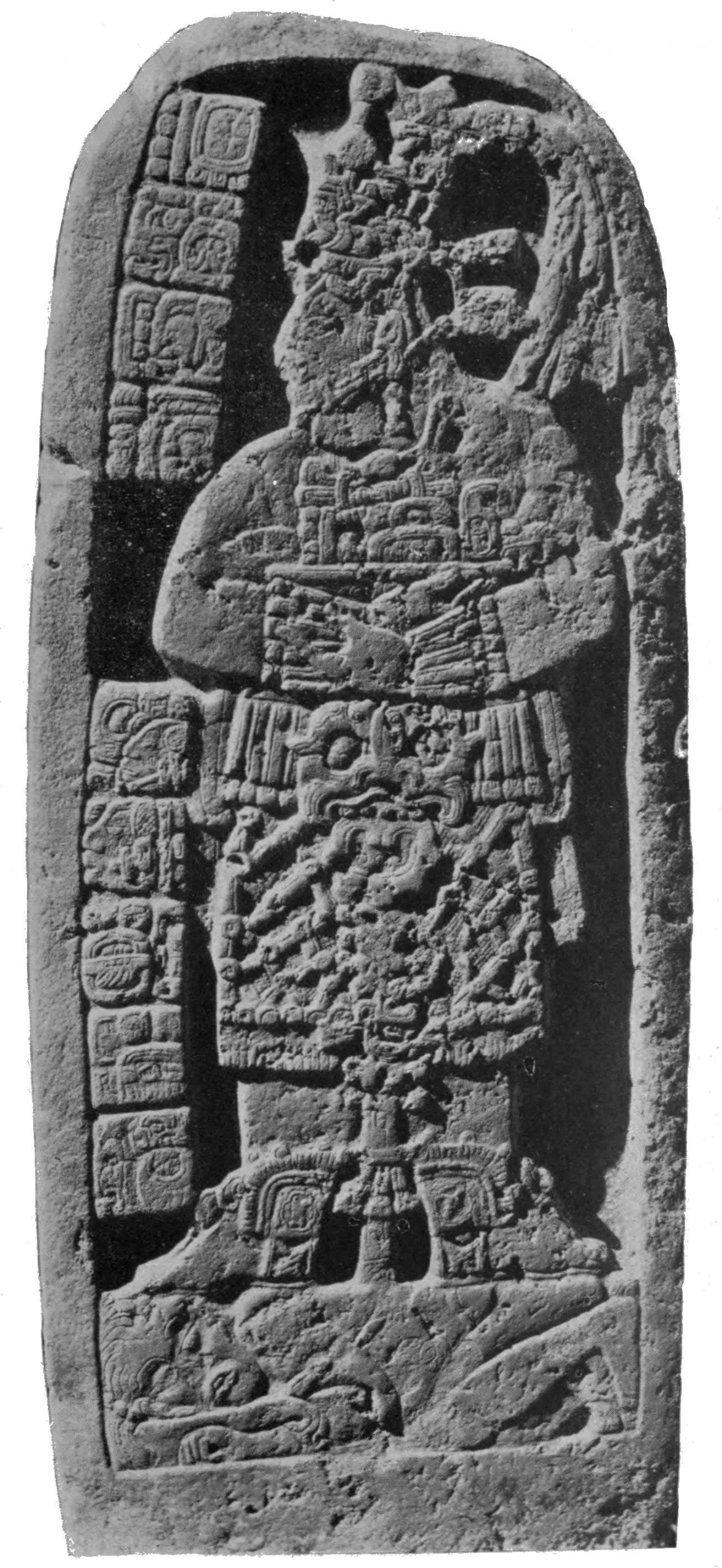
Back in 1977, the gender fluidity of deities was associated with cycles, such as the maize god and the moon god.[35] In this century, the major Aztec god Tezcatlipoca was found to have bisexual and transgender qualities (figure 3.4).[36] In studies of the so-called great goddess imagery on the Tepantitla murals at the huge central-Mexico city-state of Teotihuacan, researchers have suggested that the murals referred to a mixed-gender deity, and this fits a broader pattern in which binary gender is not clearly represented at the site (figure 3.5).[37] Analogies to historically known and living Indigenous two-spirit people have been used to explain cross-dressing or mixed-gender imagery in Maya art.[38] Male bloodletting from the penis arguably “conceptually transformed the male genitalia into a doubly potent agent of fertility, capable of shedding two life-giving fluids: semen and blood.”[39]
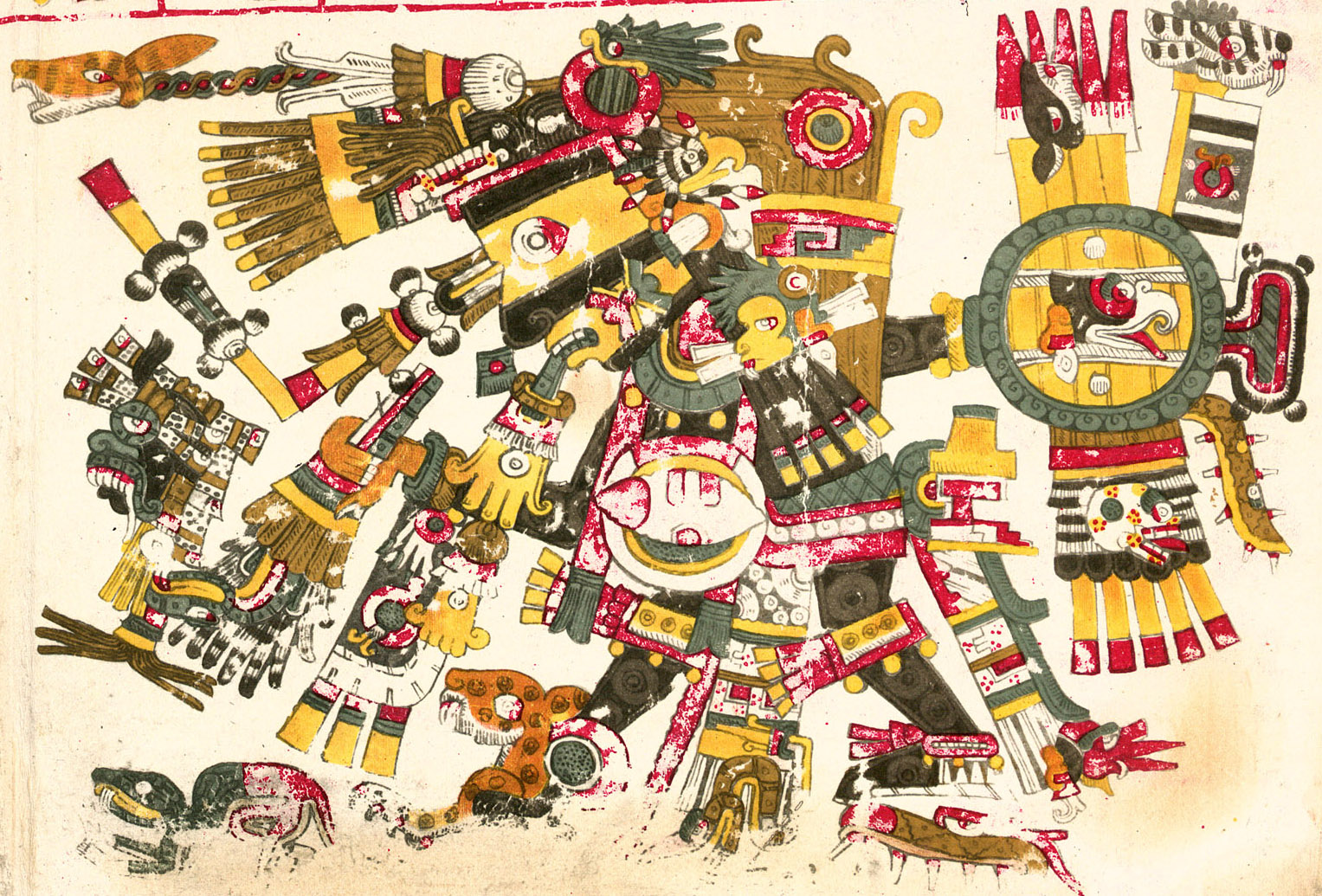
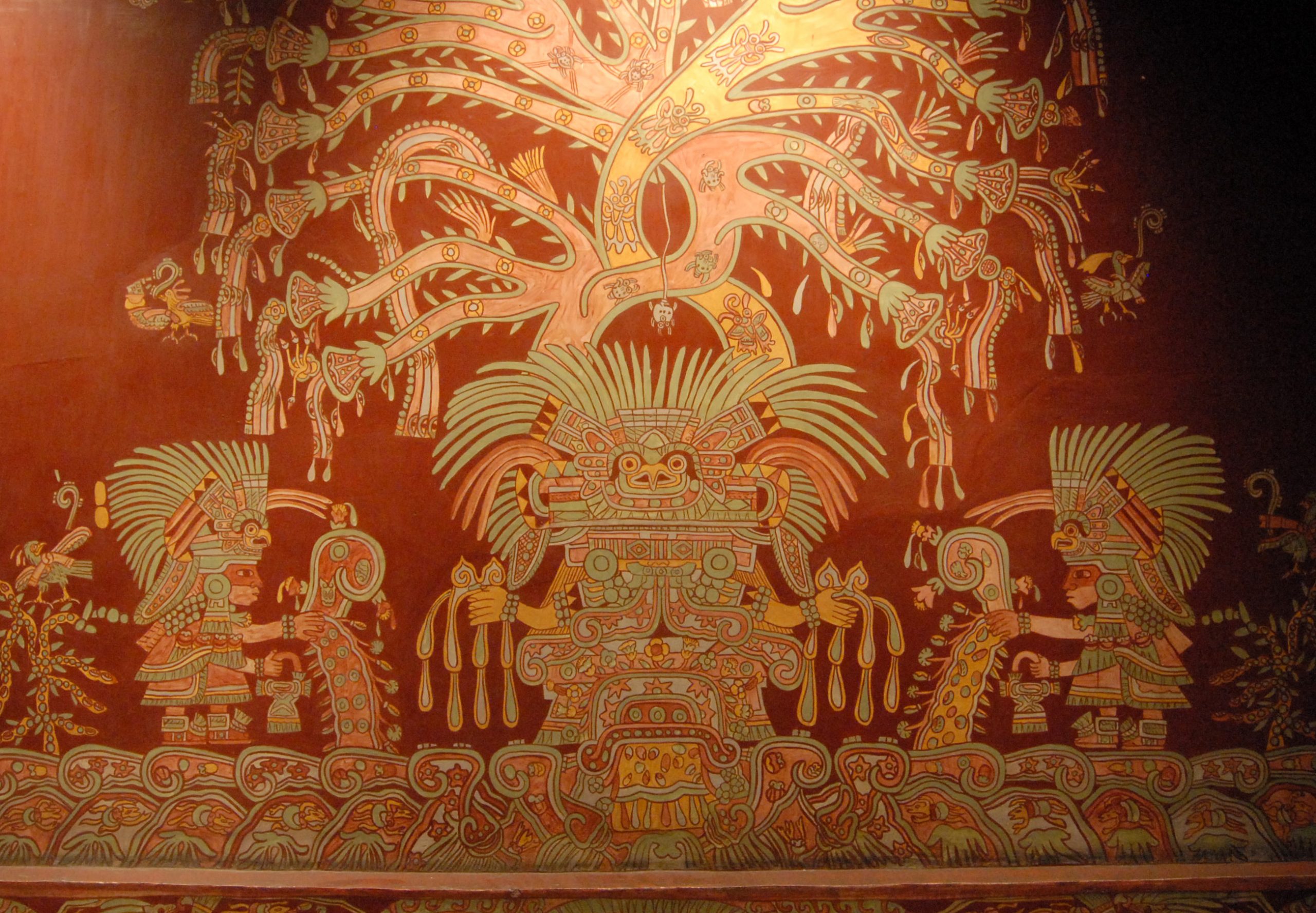
Images like Stela H at the Maya site of Copán, Honduras (figure 3.6), in which a man is depicted in a net skirt, have also been interpreted as female-associated characteristics expressing power.[40] The use of powerful feminine imagery by a man may be exemplified in the colonial United States by Edward Hyde, or Lord Cornbury (whose purported portrait is shown in figure 3.7), who as the governor of New York and New Jersey between 1701 and 1708, was Queen Anne’s representative. When he was criticized for reportedly opening the assembly dressed in women’s clothing, he is said to have answered, “You are very stupid not to see the propriety of it. In this place and particularly on this occasion I represent a woman and ought in all respects to represent her as faithfully as I can.”[41]
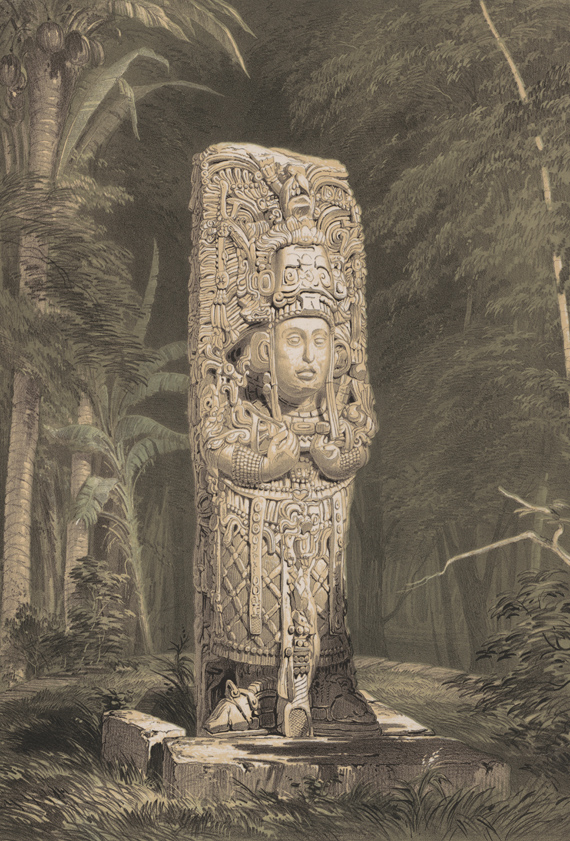
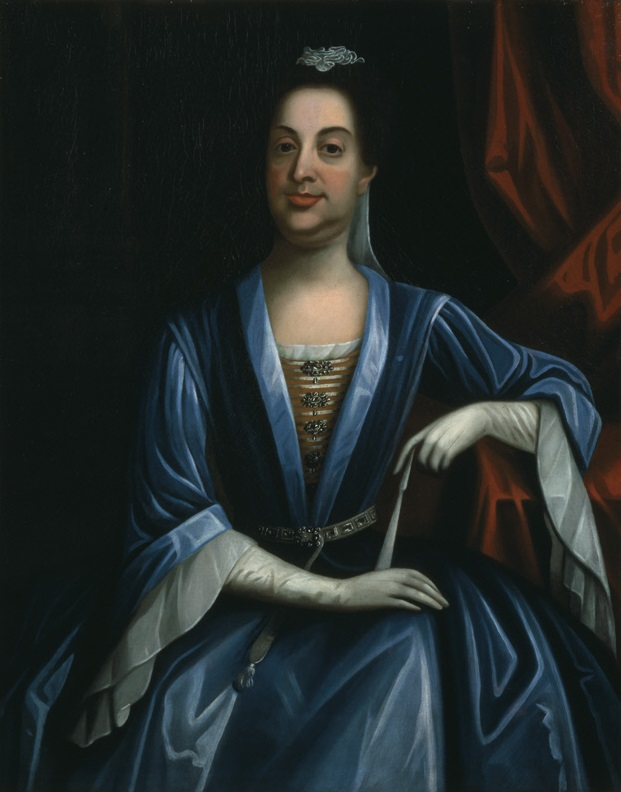
Colonial New Yorkers may have thought of Lord Cornbury as a trans person or cross-dresser, but Hyde’s own words suggest a less essentialized, more contextual identity. Many questions remain about the Lord Cornbury story, but it reminds us that trans behavior in other times and places may have symbolic resonance beyond simply deviance. Further complicating interpretation is a warning about projecting our notions of fixed, public identities—including trans identities—on ancient Mesoamerica: “Maya imaginations presented transsexuality as a strategy for understanding cosmic power. For other elements of transsexuality to fall completely outside of that context would have been unimaginable.”[42]
Abjection and Normativity
How does the reevaluation of gender and sex relate to sexuality? The historian Michel Foucault influentially argues that sex and sexuality are embedded in discourses shaped by power.[43] More recently, the historian David Halperin’s book How to Do the History of Homosexuality describes the problems inherent in applying our contemporary concept of sexuality to other places and times.[44] This attention to categorizations and binaries is a hallmark of queer theory because categorizations of people and their actions depend on ideas about what is normal and what is deviant.[45] In other words, culturally varied meanings of abjection and who is abject help define and maintain the normative. Yet there is good evidence that what we define as abject sexualities (e.g., homosexuality, transsexuality) would not have been considered so deviant in many places and times in prehistory.
For Mesoamerica, the “domain of the abject” involved concerns about being incompletely human or physically unusual (e.g., human-animal hybrids, dwarfs).[46] Intersex people (known as hermaphrodites in earlier times) fall in this context.[47] But the ancient Maya may not have been concerned so much with homosexual sex as with sex—or anything else—taken to excess.[48] The “sexuality of young men in Postclassic and Classic Maya society may itself have been more fluid than any normative heterosexual model would allow. In art, young men were routinely represented as the objects of the gaze of older men and adult women.”[49] Carved stone reliefs at a possible public building for young men at the Maya site of San Diego depict “enema insertion, erratic (probably drunken) dances, disheveled hair, and what may be autoerotic asphyxiation,”[50] and many depictions are “with a decided undertone of homoeroticism.”[51] Dichotomies like normal or deviant and man or woman implicitly define heterosexual sexuality as normal and same-sex desire as deviant. This often occurs without adequate consideration of how people in other times and places have framed sexuality differently. Our contemporary social norms lead us to believe that homosexuality and same-sex desire are deviant. However, people in other times and places may have framed sexuality differently, and in fact the contemporary Western focus on sexual practice as a fundamental aspect of social identity is itself historically unusual. Ingrid Fuglestvedt concludes that “there is nothing wrong with studying sexuality when this is relevant; what is argued is rather that the sex/gender paradigm insists on the enduring and absolute relevance of sexuality.”[52]
Intersectionality
Intersectionality, Performance, and Performativity
The diversity of gender in the ancient world has drawn attention to our assumptions about gender hierarchy—that is, the ranking of men above women. Gender complementarity (sometimes called gender parallelism) is an alternative to gender hierarchy in Mesoamerica.[53] However, both gender hierarchy and gender complementarity have been critiqued as binary oppositions that downplay variability and difference. “While these models have most certainly been useful in structuring our analyses, . . . they rely on binary understandings of the relationship between biological sex and gender and tend to obscure variability in ways we should not ignore.”[54] This variability is captured by the concepts of intersectionality and positionality that are characteristic of third-wave feminism and queer approaches to gender, sex, and sexuality.[55] Both are related to the idea that people have multiple aspects to their identity (e.g., race, ethnicity, class) that they emphasize or downplay in different contexts and that take on different importance in different contexts.[56] Many societies take pains to gender individuals with objects, tasks, and food, yet we repeatedly see that gender is not as important in the very young and the very old and that gender is often most strongly marked when people are of reproductive age.[57] Similar criticisms can be made about the (often implicit) assumption that sexuality was as important in the creation of identity in the past as it is now. Fuglestvedt suggests that we consider a scale of intensity for societal interest in sex, gender, and sexuality.[58] In these terms, many contemporary people live in societies with unusually high-intensity attitudes to gender, sex, and sexuality.
For the Maya, “the data suggest not only that Maya gender ideologies may not have been founded on a belief that binary biological sexes translate into binary gendered identities, but also that other aspects of social identity such as age or class may have played a more prominent part in determining gender roles.”[59] Ethnographic and colonial sources suggest that the aging moon may have changed gender over the course of the month—did a similar model apply to aging people? Lunar and related deities (e.g., the pulque god[60]) are typically bisexual and multigendered.[61] Likewise, Maya and Aztec carnivalesque gender blending occurred near the ends of temporal cycles.[62]
As noted previously, in Butler’s writing even the sexed body is performed rather than existing as a pregiven: in a performative approach, “the body . . . gains legibility through cultural interaction rather than as an ontologically prior reality.”[63] Gender and sexuality can be compared to style in that they are ways of doing as much as ways of being, an ongoing performance rather than inborn, static states. “The repeated stylizations of the body—everyday acts and gestures—are themselves performatives, producing the gendered identity of which they are thought to be the expressions.”[64]
Intersectional Approaches to Ancient Identity: Some Examples
The deconstruction of received (often binary) categorizations, a focus on individuals and variation over groups and norms, and Butler’s concept of performativity have led to more contextual, localized, diachronic (changing over time) approaches. Some have called for more contextual, intersectional, from-the-ground-up studies in some cases focused on individuals, not groups, thus “effectively deconstructing gender as an ontological category.”[65] In this view,
prehistoric identities do not rely on the notion of a core, stable self that remains unchanged throughout the life-course. . . . Instead, identity is context-dependent and enacted or “embodied” in ways that capture the “lived experiences” of past peoples.[66]
Because “we enact exclusionary practices on our data through the analytical categories we deploy to make the past known to us,” many scholars now advocate intersectional approaches that allow variation along more than one or two axes.[67] The following are some New World examples.
Gender, Sexuality, Age, and Occupation
A study of the early historical Chumash of California argues that undertakers were either men who engaged in homosexual acts or postmenopausal women. They were categorized together because their sexual activity did “not result in conception and birth.”[68] In this case, occupation, age, and reproductive potential intersected with gender and sexual behavior in a classification system that differs greatly from familiar contemporary ones.
Sexuality, Ethnicity, and Status
Like gender, “sexuality may be thought about, experienced and acted on differently according to age, class, ethnicity, physical ability, sexual orientation and preference, religion, and region.”[69] Recognition of this is apparent in the concept of “ethnosexual conflict” used in a study of Spanish colonialism “to refer to the clash between incompatible cultural beliefs and practices related to sexuality.”[70] Pete Sigal cites evidence for an institutionalized availability of “passives” (the xochihuas mentioned later) for elite men in precontact Aztec society. Sigal has also drawn broad comparisons between Greek and Maya pederasty in the training of elite boys.[71] “The discourse [‘language of Zuyua’] showed that nobles were allowed to engage in intergenerational erotic games that stressed the power of the elder noble over the younger.”[72]
Religion, Status, and Sexuality
The Moche of Peru (ca. AD 100–700) produced a huge number of sexually explicit pottery vessels that were often placed in high-status burials (figures 3.8 and 3.9). Researchers linked the sexual imagery not to sexual identity but to politics and power, including dependent relationships with dead ancestors.[73] One researcher has described “the religious use of male same-sex sexuality” in the Andes, and others have done the same for Mesoamerica.[74] For example, among the Aztecs, the effeminate xochihuas “provided warriors with a variety of services, including sex. At other times, the xochihuas, some of whom were housed in the temples, were available for sexual favors and other chores to priests and other members of the high nobility.”[75] Sigal asserts that “sodomy in the period immediately preceding the [Aztec] conquest was related to the gods, sacrifice, and ritual, and closely associated with disease and woe,”[76] and he notes that the ancient Maya “forcibly sodomized their gods in order to masculinize themselves and gain power from the gods.”[77] Indeed, Sigal concludes that concepts like the “transsexual penis” and “floating phallus” are “almost incomprehensible to a Western imagination. For the Maya, sexual desire and fantasy went beyond the field delineated by Freud and the sexologists. Sexual behavior did not exist as a discernible category of sexuality but rather as an element of ritual.”[78]
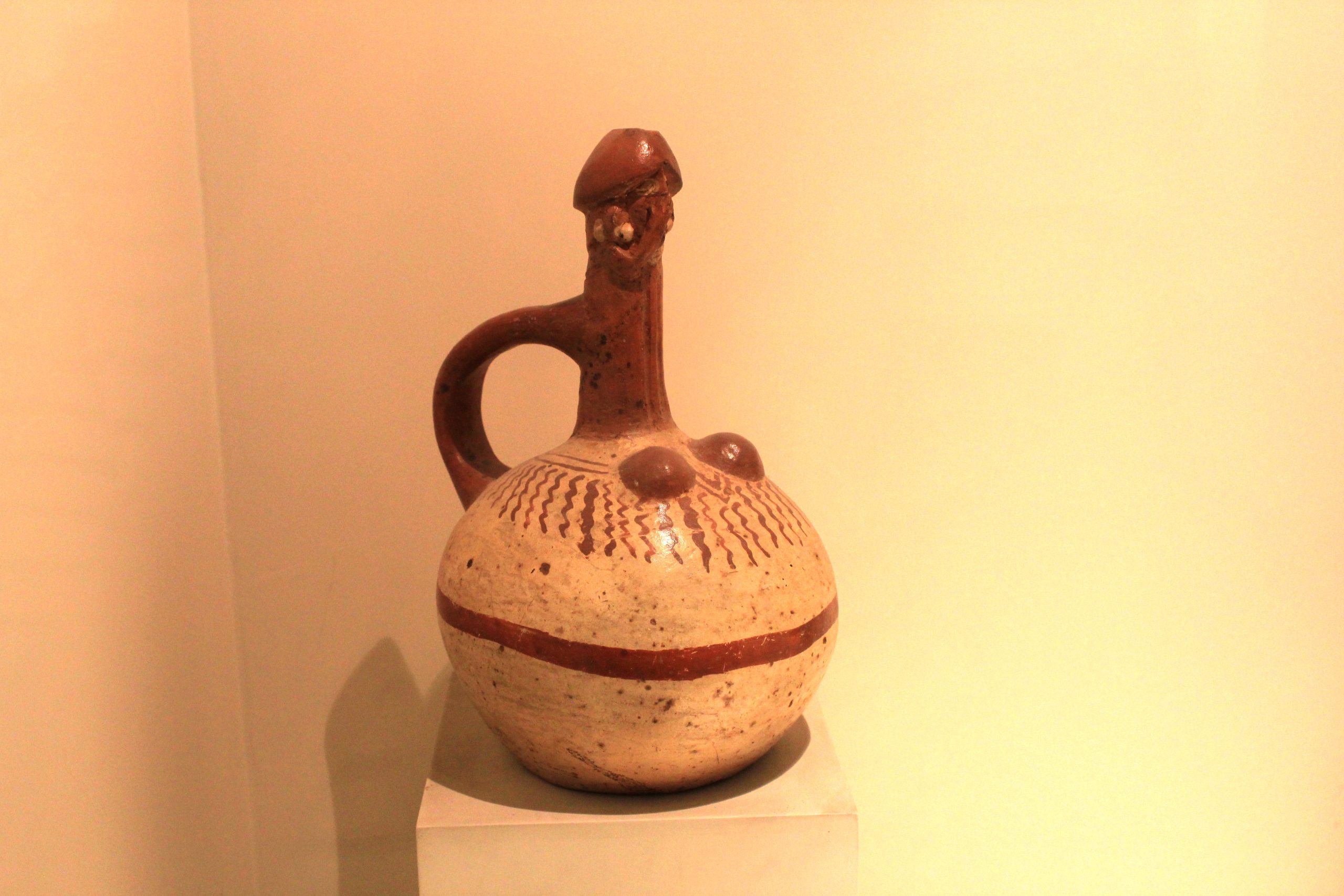
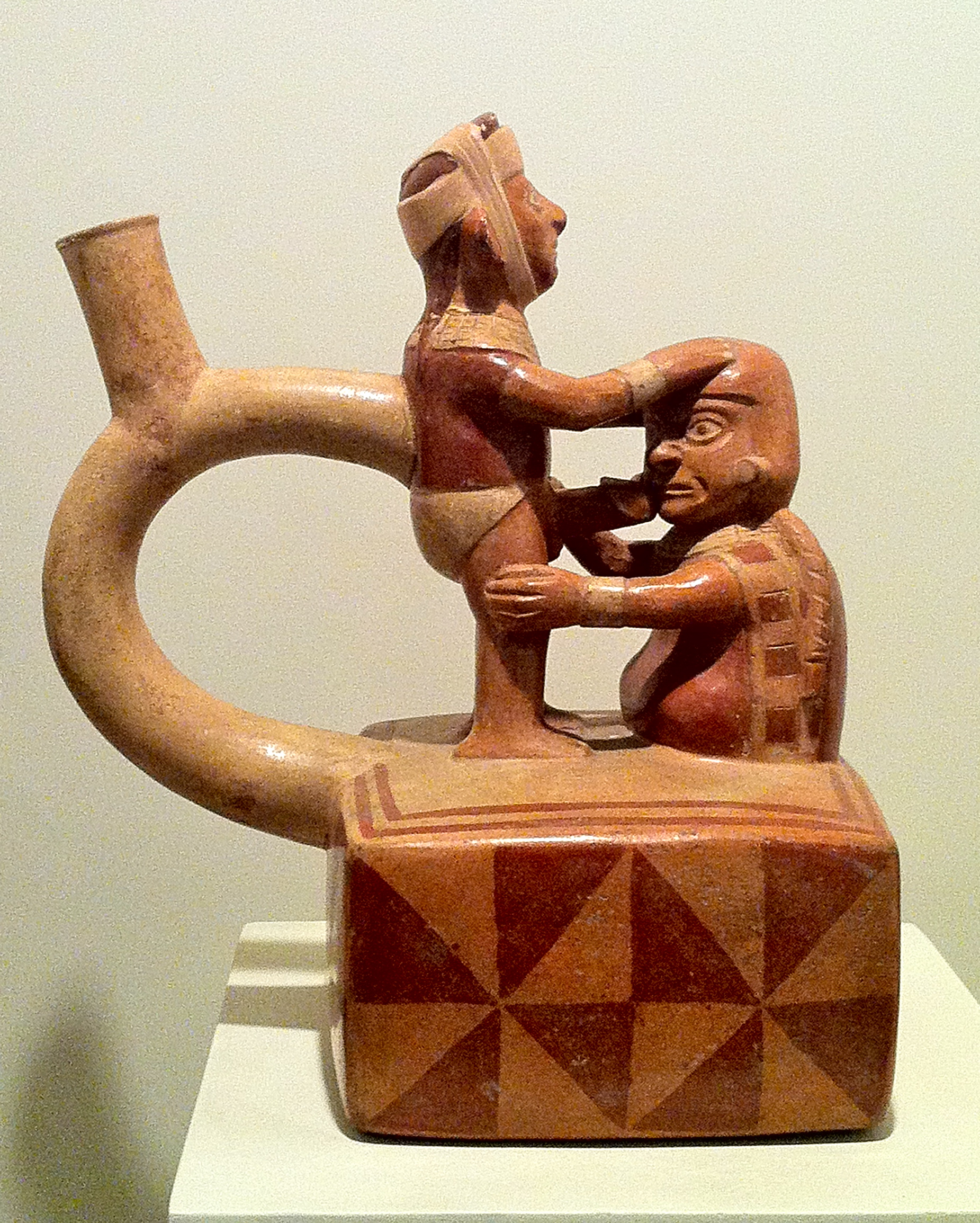
Gender, Sexuality, and Colonialism
Gender and status were intimately linked in both Indigenous and colonial Latin America. Some Indigenous cultures (e.g., the Maya and Aztec) shared with the Spanish the idea that people conquered in war were gendered feminine, and sodomy was a metaphor for conquest: “Elites among the Maya considered passivity in males feminine and viewed the vanquished warrior as symbolically if not actually passive.”[79] Nevertheless, many authors have argued that the intersection of gender, sexuality, and status intensified during the Spanish invasion and subsequent colonial period, leading to the increased oppression of women and Others of all sorts.

Europeans in the New World sought to eliminate—often brutally—expressions of gender and sexuality that did not correspond with their Inquisition-era ideas. An infamous print (figure 3.10) depicts Vasco Núñez de Balboa, a Spanish explorer, conquistador, and governor, as he “throws some Indians, who had committed the terrible sin of sodomy, to the dogs to be torn apart.”[80] Indeed, one of the insidious legacies of colonialism is the widespread idea that Indigenous cultures have always been conservative and restrictive around issues of gender, sex, and sexuality when in many cases that conservatism was imposed on them during colonization. Archaeologists and our colleagues in cultural anthropology and history are showing instead that the many pre-Columbian cultures of the New World held diverse ideas about these issues and that this evidence must be understood on its own terms, not on ours.
Conclusion
Academics in many fields now challenge normative classifications of people and behavior. Just as anthropologists long ago abandoned terms like savage and the application of racial classifications, so in archaeology we are gradually abandoning the uncritical use of terms like heterosexual and homosexual and ethnocentric assumptions about gender, sexuality, and their centrality to identity. Foucault wrote about the role of experts in medicine and science in the creation of normative categories.[81] Archaeologists are some of those experts, and we have become more self-critical about our interpretations of issues around sex, gender, and sexuality. The heteronormativity of museum dioramas that present a timeless view of the nuclear family has been criticized.[82] Even as recently as 2013 a study of seventy years of reconstructions of ancient life in National Geographic concluded that “women and women’s work are significantly underrepresented and undervalued” and that a “vigorous archaeology of gender has had little impact on the magazine’s imagined past.”[83] Clearly, we have more to do. Archaeologists who engage with these issues are not just trying to dig up LGBTQ+ people; we are trying to challenge normativity in all its forms.
Media Attributions
- Figure 3.4. © Unknown is licensed under a Public Domain license
- Figure 3.6. © Frederick Catherwood, Views of Ancient Monuments in Central America, Chiapas is licensed under a Public Domain license
- Figure 3.7. © Ecummenic is licensed under a Public Domain license
- Figure 3.9. © Pfrishauf is licensed under a CC BY-SA (Attribution ShareAlike) license
- Figure 3.10. © Theodor de Bry is licensed under a CC BY-SA (Attribution ShareAlike) license
- B. L. Voss, “Sexuality Studies in Archaeology,” Annual Review of Anthropology 37 (2008): 317–336. See also this volume’s chapter 1. ↵
- E.g., A. Praetzellis, “Queer Theory,” in Archaeological Theory in a Nutshell (Walnut Creek, CA: Left Coast Press, 2015), chap. 7. ↵
- J. McLaughlin, M. E. Casey, and D. Richardson, “Introduction: At the Intersections of Feminist and Queer Debates,” in Intersections between Feminist and Queer Theory, ed. D. Richardson, J. McLaughlin, and M. E. Casey (New York: Palgrave Macmillan, 2006), 1–18. ↵
- A. C. Roosevelt, “Gender in Human Evolution: Sociobiology Revisited and Revised,” in In Pursuit of Gender: Worldwide Archaeological Approaches, ed. S. M. Nelson and M. Rosen-Ayalon (Walnut Creek, CA: AltaMira Press, 2002), 355–376. ↵
- T. A. Dowson, “Why Queer Archaeology? An Introduction,” in Queer Archaeologies,” World Archaeology 32, no. 2 (2000): 161–165; S. Terendy and N. Lyons, eds., Que(e)rying Archaeology: Proceedings of the Thirty-Seventh Annual Chacmool Conference (Calgary, AB: Archaeological Association, University of Calgary, 2009). ↵
- E.g., C. F. Klein, “None of the Above: Gender Ambiguity in Nahua Ideology,” in Gender in Pre-Hispanic America, ed. C. F. Klein and J. Quilter (Washington, DC: Dumbarton Oaks Research Library and Collection, 2001), 183–253; I. Silverblatt, “Andean Women in the Inca Empire,” Feminist Studies 4, no. 3 (1978): 37–61; I. Silverblatt, Moon, Sun and Witches: Gender Ideologies and Class in Inca and Colonial Peru (Princeton, NJ: Princeton University Press, 1987); I. Silverblatt, “Lessons of Gender and Ethnohistory in Mesoamerica,” Ethnohistory 42, no. 4 (1995): 639–650. ↵
- T. D. Bulger and R. A. Joyce, “Archaeology of Embodied Subjectivities,” in A Companion to Gender Prehistory, ed. D. Bolger (New York: Wiley and Sons, 2013), 68–85. ↵
- For universals, see e.g., P. L. Geller, “Identity and Difference: Complicating Gender in Archaeology,” Annual Review of Anthropology 38 (2009): 65; and for categorization, see C. Blackmore, “How to Queer the Past Without Sex: Queer Theory, Feminisms and the Archaeology of Identity,” Archaeologies: Journal of the World Archaeological Congress 7, no. 12 (2011): 79. ↵
- B. L. Voss, “Looking for Gender, Finding Sexuality: A Queer Politic of Archaeology, Fifteen Years Later,” in Terendy and Lyons, Que(e)rying Archaeology, 34. ↵
- E.g., A. Fausto-Sterling, Sexing the Body: Gender Politics and the Construction of Sexuality (New York: Basic Books, 2000). ↵
- Fausto-Sterling, 7. ↵
- P. L. Geller, “Skeletal Analysis and Theoretical Complications,” World Archaeology 37 (2005): 598. ↵
- R. Storey, “Health and Lifestyle (before and after Death) among the Copán Elite,” in Copán: The History of an Ancient Maya Kingdom, ed. E. W. Andrews and W. L. Fash (Santa Fe, NM: School of American Research Press, 2005), 315–344. ↵
- E. M. Perry and J. M. Potter, “Materiality and Social Change in the Practice of Feminist Anthropology,” in Feminist Anthropology: Past Present and Future, ed. P. L. Geller and M. K. Stockett (Philadelphia: University of Pennsylvania Press, 2006), 118. ↵
- L. Ghisleni, A. M. Jordan, and E. Fioccoprile, “Introduction to ‘Binary Binds’: Deconstructing Sex and Gender Dichotomies in Archaeological Practice,” Journal of Archaeological Method and Theory 23, no. 3 (2016): 779. ↵
- Ghisleni, Jordan, and Fioccoprile, 771. ↵
- L. Meskell and R. W. Preucel, “Identities,” in A Companion to Social Archaeology, ed. L. Meskell and R. W. Preucel (Malden, MA: Blackwell, 2007), 122. ↵
- T. W. Laqueur, Making Sex: Body and Gender from the Greeks to Freud (Cambridge, MA: Harvard University Press, 1990). ↵
- R. A. Nye, “Sexuality,” in A Companion to Gender History, ed. T. A. Meade and M. E. Wiesner (Malden, MA: Blackwell, 2004), 16. ↵
- R. Gilchrist, “Experiencing Gender: Identity, Sexuality and the Body,” Gender and Archaeology: Contesting the Past (London: Routledge, 1999), 55. ↵
- J. Money and A. A. Ehrhardt, Man and Woman, Boy and Girl: Differentiation and Dimorphism of Gender Identity from Conception to Maturity (Baltimore: Johns Hopkins University Press, 1972). See also A. Oakley, Sex, Gender, and Society (San Francisco, CA: Harper and Row, 1972); and R. J. Stoller, Sex and Gender: On the Development of Masculinity and Femininity (New York: Science House, 1968). ↵
- J. Butler, Gender Trouble (New York: Routledge, 1990); J. Butler, Bodies That Matter: On the Discursive Limits of “Sex” (New York: Routledge, 1993). ↵
- Laqueur, Making Sex. ↵
- Butler, Gender Trouble, 10. ↵
- J. Sofaer, The Body as Material Culture: A Theoretical Osteoarchaeology (New York: Cambridge University Press, 2006), 97. Butler’s followers include I. Fuglestvedt, “Declaration on Behalf of an Archaeology of Sexe,” Journal of Archaeological Method and Theory 21, no. 1 (2014): 52; R. Schmidt, “The Contribution of Gender to Personal Identity in the Southern Scandinavian Mesolithic,” in The Archaeology of Plural and Changing Identities: Beyond Identification, ed. E. Casella and C. Fowler (New York: Springer, 2004), 79–108; and T. Ardren, “Studies of Gender in the Prehispanic Americas,” Journal of Archaeological Research 16 (2008): 1. ↵
- Fuglestvedt, “Declaration on Behalf of an Archaeology of Sexe,” 58. ↵
- G. G. McCafferty and S. D. McCafferty, “The Metamorphosis of Xochiquetzal,” in Manifesting Power: Gender and the Interpretation of Power in Archaeology, ed. T. L. Sweely (New York: Routledge, 1999), 117. ↵
- L. H. Wren, K. Spencer, and T. Nygard, “To Face or to Flee from the Foe: Women in Warfare at Chichen Itza,” in Landscapes of the Itza: Archaeology and Art History at Chichen Itza and Neighboring Sites, ed. L. H. Wren, C. Kristan-Graham, T. Nygard, and K. Spencer (Gainesville: University Press of Florida, 2018), 260–261. ↵
- K. Reese-Taylor, P. Mathews, J. Guernsey, and M. Fritzler, “Warrior Queens among the Ancient Maya,” in Blood and Beauty: Organized Violence in the Art and Archaeology of Mesoamerica and Central America, ed. H. Orr and R. Koontz (Los Angeles, CA: Cotsen Institute of Archaeology Press, 2009), 39–72. ↵
- J. Nordbladh and T. Yates, “This Perfect Body, This Virgin Text,” in Archaeology after Structuralism: Post-structuralism and the Practice of Archaeology, ed. I. Bapty and T. Yates (New York: Routledge, 1990), 222–239. ↵
- For an overview, see E. M. Brumfiel, “The Archaeology of Gender in Mesoamerica: Moving beyond Gender Complementarity,” in A Companion to Gender Prehistory, ed. D. Bolger (Malden, MA: John Wiley, 2013), 574–575. ↵
- M. G. Looper, “Women-Men (and Men-Women): Classic Maya Rulers and the Third Gender,” in Ancient Maya Women, ed. T. Ardren (Walnut Creek, CA: AltaMira Press, 2001), 171–202; B. J. A. Follensbee, “Unsexed Images, Gender-Neutral Costume, and Gender-Ambiguous Costume in Formative Period Gulf Coast Cultures,” in Wearing Culture: Dress and Regalia in Early Mesoamerica and Central America, ed. H. S. Orr and M. G. Looper (Boulder: University Press of Colorado, 2014), 226. ↵
- Follensbee, “Unsexed Images,” 217. ↵
- J. P. Blomster, “The Naked and the Ornamental: Embodiment and Fluid Identities in Early Formative Oaxaca,” in Wearing Culture: Dress and Regalia in Early Mesoamerica and Central America, ed. H. S. Orr and M. G. Looper (Boulder: University Press of Colorado, 2014), 107. ↵
- E. Hunt, The Transformation of the Hummingbird (Ithaca, NY: Cornell University Press, 1977), 95–109; for an expansion of this research, see K. Bassie-Sweet, “Corn Deities and the Male/Female Principle,” in Ancient Maya Gender Identity and Relations, ed. L. S. Gustafson and A. M. Trevelyan (Westport, CT: Bergin and Garvey, 2002), 169–190; and S. Milbrath, “Gender and the Roles of Lunar Deities in Postclassic Central Mexico and Their Correlations with the Maya Area,” Estudios de Cultura Nahuatl 39 (1995): 45–93. ↵
- Klein, “None of the Above,” 219–221. ↵
- Milbrath, “Gender and the Roles of Lunar Deities in Postclassic Central Mexico and Their Correlations with the Maya Area”; E. C. Mandell, “A New Analysis of the Gender Attribution of the ‘Great Goddess’ of Teotihuacan,” Ancient Mesoamerica 26, no. 1 (2015): 43. ↵
- F. K. Reilly, “Female and Male: The Ideology of Balance and Renewal in Elite Costuming among the Ancient Maya,” in Gustafson and Trevelyan, Ancient Maya Gender Identity and Relations, 319–328; Looper, “Women-Men (and Men-Women).” ↵
- A. J. Stone, “Sacrifice and Sexuality: Some Structural Relationships in Classic Maya Art,” in The Role of Gender in Pre-Columbian Art and Architecture, ed. V. E. Miller (Lanham, MD: University Press of America, 1988), 75–76. ↵
- R. A. Joyce, “Dimensiones Simbolicas del Traje en Monumentos Clasicos Mayas: La Construccion del Genero a Traves del Vestido,” in La Indumentaria y El Tejido Mayas a Traves del Tiempo, Monograph 8, ed. L. Asturias and D. Fernandez (Guatemala City, Guatemala: Museo Ixchel del Traje Indigena, 1992). Rosemary A. Joyce, “The Construction of Gender in Classic Maya Monuments,” in Gender and Archaeology, ed. R. P. Wright (Philadelphia: University of Pennsylvania Press, 1996), 166–195. ↵
- P. U. Bonomi, The Lord Cornbury Scandal: The Politics of Reputation in British America (Chapel Hill: University of North Carolina Press, 1998), 15. ↵
- P. Sigal, “Gendered Power, the Hybrid Self, and Homosexual Desire in Late Colonial Yucatan,” in Infamous Desire: Male Homosexuality in Colonial Latin America, ed. P. Sigal (Chicago: University of Chicago Press, 2003), 115. ↵
- M. Foucault, The History of Sexuality, vol. 1, An Introduction (London: Allen Lane, 1978). ↵
- D. M. Halperin, How to Do the History of Homosexuality (Chicago: University of Chicago Press, 2002). ↵
- See B. L. Voss, “Feminisms, Queer Theories, and the Archaeological Study of Past Sexualities,” World Archaeology 32, no. 2 (2000): 184. ↵
- E. M. Perry and R. A. Joyce, “Interdisciplinary Applications: Providing a Past for ‘Bodies That Matter’: Judith Butler’s Impact on the Archaeology of Gender,” International Journal of Sexuality and Gender Studies 6, nos. 1–2 (2001): 74. ↵
- R. A. Joyce, “Performance and Inscription: Human Nature in Prehispanic Mesoamerica,” in Gender and Power in Prehispanic Mesoamerica, ed. R. Joyce (Austin: University of Texas Press, 2000), 191. ↵
- P. Sigal, From Moon Goddesses to Virgins: The Colonization of Yucatecan Maya Sexual Desire (Austin: University of Texas Press, 2000), 224. ↵
- R. A. Joyce, “Gender and Mesoamerican Archaeology,” in Handbook of Gender in Archaeology, ed. S. M. Nelson (Lanham, MD: AltaMira Press, 2006), 800. ↵
- J. J. Aimers, “The Sexual Colonization of the Ancient Maya,” Research Reports in Belizean Archaeology 11 (2014): 157. ↵
- S. D. Houston and T. Inomata, The Classic Maya (Cambridge: Cambridge University Press, 2009), 55. ↵
- Fuglestvedt, “Declaration on Behalf of an Archaeology of Sexe,” 69. ↵
- S. D. McCafferty, and G. G. McCafferty, “Powerful Women and the Myth of Male Dominance in Aztec Society,” Archaeological Review from Cambridge 7 (1988): 45–59. For gender parallelism, see Rosemary A. Joyce, “Archaeology of Gender in Mesoamerican Societies,” in The Oxford Handbook of Mesoamerican Archaeology, ed. D. L. Nichols and C. A. Pool (New York: Oxford University Press, 2012), 663–672. ↵
- M. K. Stockett, “On the Importance of Difference: Re-envisioning Sex and Gender in Ancient Mesoamerica,” World Archaeology 37, no. 4 (2005): 568. ↵
- Blackmore, “How to Queer the Past Without Sex,” 77; Voss, “Looking for Gender, Finding Sexuality.” ↵
- Blackmore, “How to Queer the Past Without Sex,” 77. ↵
- R. Gilchrist, “Archaeology and the Life Course: A Time and Age for Gender,” in A Companion to Social Archaeology, ed. L. Meskell and R. W. Preucel (Malden, MA: Blackwell, 2007), 142–160. ↵
- Fuglestvedt, “Declaration on Behalf of an Archaeology of Sexe,” 66; Fuglestvedt drew on Schmidt, “The Contribution of Gender to Personal Identity.” ↵
- Stockett, “On the Importance of Difference,” 571–572. ↵
- Pulque is a lightly fermented beverage made from the agave plant. It was a common pre-Columbian beverage that also had ritual importance. ↵
- Milbrath, “Gender and the Roles of Lunar Deities,” 46. ↵
- Klein, “None of the Above,” 195. ↵
- Ghisleni, Jordan, and Fioccoprile, “Introduction to ‘Binary Binds,’” 770. ↵
- Alberti, “Queer Prehistory,” 95. See also Joyce, “Performance and Inscription.” ↵
- Gilchrist, “Experiencing Gender,” 73. See also L. Meskell, “Re-Em(bed)ding Sex: Domesticity, Sexuality, and Ritual in New Kingdom Egypt,” in Archaeologies of Sexuality (New York: Routledge, 2000), 253–262; and Meskell and Preucel, “Identities.” ↵
- Alberti, “Queer Prehistory,” 94. ↵
- Ghisleni, Jordan, and Fioccoprile, “Introduction to ‘Binary Binds,’” 777. ↵
- S. E. Hollimon, “The Third Gender in Native California: Two-Spirit Undertakers among the Chumash and Their Neighbors,” in Women in Prehistory: North America and Mesoamerica, ed. C. Claassen and R. A. Joyce (Philadelphia: University of Pennsylvania Press, 1997), 183. ↵
- C. A. Vance, ed., Pleasure and Danger: Exploring Female Sexuality (Boston, MA: Routledge, 1984), 17. ↵
- For the study of Spanish colonialism, see B. L. Voss, “Domesticating Imperialism: Sexual Politics and the Archaeology of Empire,” American Anthropologist 110, no. 2 (2008): 196; and for ethnosexual conflict, see J. Nagel, Race, Ethnicity, and Sexuality: Intimate Intersections, Forbidden Frontiers (Oxford: Oxford University Press, 2003). ↵
- Sigal, “Gendered Power,” 104, 108. ↵
- Sigal, 109. ↵
- For sexual imagery linked to politics and power, see M. Weismantel, “Moche Sex Pots: Reproduction and Temporality in Ancient South America,” American Anthropologist 106, no. 3 (2004): 495–505; J. M. Gero, “Sex Pots of Ancient Peru: Post-gender Reflections,” in Combining the Past and the Present: Archaeological Perspectives on Society, ed. R. Haaland, T. Oestigaard, N. Anfinset, and T. Saetersdal (Oxford: Archaeopress, 2004), 3–22; and S. Bourget, Sex, Death, and Sacrifice in Moche Religion and Visual Culture (Austin: University of Texas Press, 2006). See also Voss, “Sexuality Studies in Archaeology,” 322. ↵
- M. J. Horswell, “Toward an Andean Theory of Ritual Same-Sex Sexuality and Third-Gender Subjectivity,” in Infamous Desire: Male Homosexuality in Colonial Latin America, ed. P. Sigal (Chicago: University of Chicago Press, 2003), 43. ↵
- P. Sigal, “Queer Nahuatl: Sahagún’s Faggots and Sodomites, Lesbians and Hermaphrodites,” Ethnohistory 54, no. 1 (2007): 23. ↵
- P. Sigal, “The Cuiloni, the Patlache, and the Abominable Sin: Homosexualities in Early Colonial Nahua Society,” Hispanic American Historical Review 85 (2005): 577. ↵
- Sigal, “Gendered Power, the Hybrid Self,” 123. ↵
- Sigal, From Moon Goddesses to Virgins, 249. ↵
- P. Sigal, “Gender, Male Homosexuality, and Power in Colonial Yucatan,” Latin American Perspectives 29, no. 2 (2002): 25. ↵
- Theodor de Bry’s America, University of Houston Libraries Digital Collections, https://id.lib.uh.edu/ark:/84475/do5460qt16k. ↵
- Foucault, The History of Sexuality. ↵
- T. A. Dowson, “Archaeologists, Feminists, and Queers: Sexual Politics in the Construction of the Past,” in Feminist Anthropology: Past, Present, and Future, ed. P. L. Geller and M. K. Stockett (Philadelphia: University of Pennsylvania Press, 2007), 89–102. ↵
- J. Solometo and J. Moss, “Picturing the Past: Gender in National Geographic Reconstructions of Prehistoric Life,” American Antiquity 78, no. 1 (2013): 123. ↵
A scientific discipline concerned with the biological and behavioral aspects of human beings, their extinct hominin ancestors, and related nonhuman primates, particularly from an evolutionary perspective.
The study of history with particular attention to ancient artifacts and archaeological and historical sites.
An artifact that has been removed from its original archaeological context, usually illegally, by nonarchaeologists who do not record contextual information. Looted artifacts are often sold on the art market away from their place of origin. Archaeologists despise looting because an artifact without context is much less informative about the culture that produced it than an artifact with contextual information.
An archaeological region defined by precontact cultural traits such as a distinctive calendar system, maize agriculture, and state-level political organization. It extended from northern Mexico through Belize, Guatemala, El Salvador, Honduras, Nicaragua, and northern Costa Rica. Within this region pre-Columbian societies flourished before the Spanish colonization of the Americas.
The longest continental mountain range in the world, forming a continuous highland along the western edge of South America.
The reflective assessment and critique of society and culture by applying knowledge from the social sciences and the humanities to reveal and challenge power structures. Critical theory has origins in sociology and also in literary criticism.
A range of social movements, political movements, and ideologies that share a common goal: to define, establish, and achieve the political, economic, personal, and social equality of the sexes.
A confrontation or opposition to a status quo or hegemonic power and its legitimacy in politics, but also appears in other spheres of life, such as history, media, and music.
Normativity is the phenomenon in human societies of designating some actions or outcomes as good or desirable or permissible and others as bad or undesirable or impermissible
The belief that heterosexuality, predicated on the gender binary, is the norm or default sexual orientation.
Words and concepts that are considered to be direct opposites, such as man and woman, male and female.
Those who study human remains in archaeological sites. First coined by British archaeologist Grahame Clark in 1972 as a reference to zooarchaeology, the study of animal bones from archaeological sites.
The methodological study of cultural change and variability in archaeology.
The practice and science of classification of things or concepts, including the principles that underlie such classification.
Cultural ideas about gender frequently imply that one’s gender identity is fixed and unchanging. Gender fluidity describes situations in which a person’s gender identity may change throughout the life cycle or in different contexts.
How genders are ranked. Men are typically ranked higher than women, having more power, prestige, and so on.
Men and women (and other genders, if they are recognized) play similarly important roles but in different areas of social life. Gender complementarity more accurately describes gender relations than gender hierarchy in some times and places.
Men and women (and other genders, if culturally recognized) have similar levels of power and prestige but in different areas of social life. Often used interchangeably with gender complementarity and as an alternative to gender hierarchy in some times and places (e.g., in the Inca empire).
Social identities, such as race, class, and gender, that overlap or intersect and the related systems of oppression, domination, or discrimination.
The contexts that make up an individual’s identity, such as race, class, gender, and sexuality, and how these affect the person’s view of the world.
A linguistics term referring to utterances that do not just describe the world but change it (e.g., “I pronounce you husband and wife”).
Popularized by the scholar Judith Butler in gender studies, the term highlights the idea that gender is not a given but must be continually demonstrated through word, action, dress, and so on. The concept derives from the linguistics term performative.
Effeminate men who had a range of institutional roles in Aztec society.
A term used in social sciences and anthropology to describe the act of judging another culture by the values and standards of one’s own culture in the belief that one’s culture is superior, especially with respect to language, behavior, customs, and religion.
